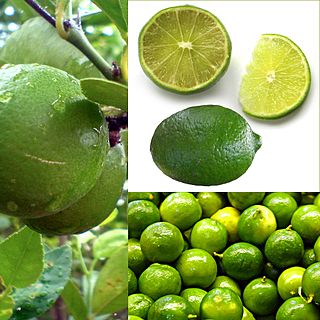Micro-budding is a grafting technique used in the development of citrus trees. Like traditional grafting, there is a combination the hardy characteristics of a rootstock with the desired fruit of the budded region; however, micro-budding is done at a younger age, and because of apical hormonal dominance, the resulting citrus trees grow faster and bear fruit at an earlier stage (2 years) than traditional T-budded grafted trees (5 years to fruit). [1] It was developed in 1997 by Dr. Mani Skaria, a citrus scientist (retired) from the Texas A&M University - Kingsville Citrus Center. [2]

Grafting or graftage is a horticultural technique whereby tissues of plants are joined so as to continue their growth together. The upper part of the combined plant is called the scion while the lower part is called the rootstock. The success of this joining requires that the vascular tissue grow together and such joining is called inosculation. The technique is most commonly used in asexual propagation of commercially grown plants for the horticultural and agricultural trades.

Citrus is a genus of flowering trees and shrubs in the rue family, Rutaceae. Plants in the genus produce citrus fruits, including important crops such as oranges, lemons, grapefruits, pomelos, and limes.

Texas A&M University is a public research university in College Station, Texas, United States. Since 1948, it has been the founding member of the Texas A&M University System. The Texas A&M system endowment is among the 10 largest endowments in the nation. As of 2017, Texas A&M's student body is the largest in Texas and the second largest in the United States. Texas A&M's designation as a land, sea, and space grant institution–the only university in Texas to hold all three designations–reflects a range of research with ongoing projects funded by organizations such as the National Aeronautics and Space Administration (NASA), the National Institutes of Health, the National Science Foundation, and the Office of Naval Research. In 2001, Texas A&M was inducted as a member of the Association of American Universities. The school's students, alumni—over 450,000 strong—and sports teams are known as Aggies. The Texas A&M Aggies athletes compete in 18 varsity sports as a member of the Southeastern Conference.
Cultivar varieties utilized for micro-budding are Meyer lemon, Eureka lemon, variegated pink lemon, Persian lime, Kaffir lime, Australian Finger lime, Mandarins, Rio Red grapefruit, Calamondin, and Kumquat trees. [3]

The term cultivar most commonly refers to an assemblage of plants selected for desirable characters that are maintained during propagation. More generally, cultivar refers to the most basic classification category of cultivated plants in the International Code of Nomenclature for Cultivated Plants (ICNCP). Most cultivars arose in cultivation, but a few are special selections from the wild.

Citrus × meyeri, the Meyer lemon, is a hybrid citrus fruit native to China. It is a cross between a citron and a mandarin/pomelo hybrid distinct from the common or bitter oranges.

The variegated pink lemon, also called the variegated Eureka lemon, or pink-fleshed Eureka lemon is a cultivar of lemon with unique pink flesh, a green-striped rind when ripening, and variegated foliage. It was discovered as a sport on an ordinary Eureka lemon tree in Burbank, California in 1931.
Micro-budding is used in commercial citrus groves. Because of the smaller sizes of the trees, they are utilized in high-density planting, reducing the land costs to growers, but producing a higher output of citrus fruit per acre. [4] Micro-budding may be used as a tool against the citrus greening disease, Huonglongbing, a significant challenge to the citrus industry. [5] [6]












